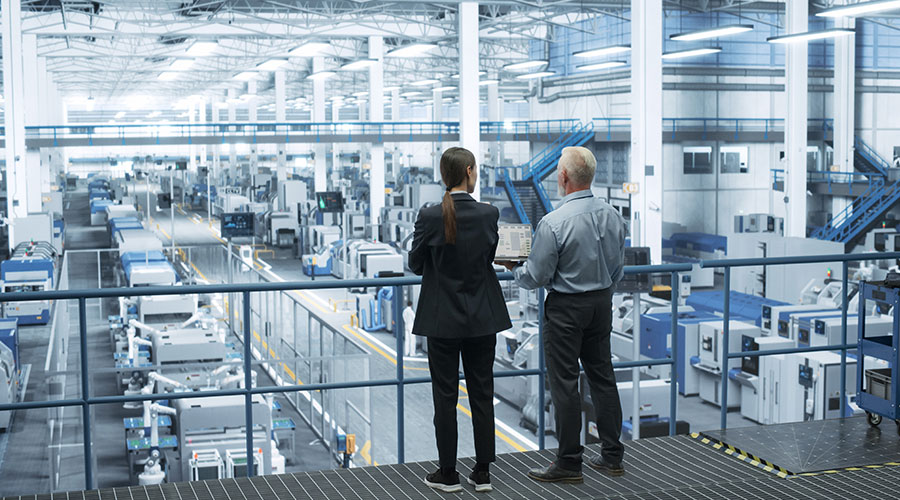How Commercial Real Estate is Doing Depends on Point of View
For the last two quarters of 2010, the national vacancy rate in commercial office space fell. According to CBRE Econometric Advisors, at the end of 2010 the vacancy rate came in at 16.4 percent, down from the 2010 second quarter peak of 16.7 percent.
Out in the trenches, you might like to see more dramatic numbers, but these figures and other indicators point to a recovery in commercial real estate well underway. In fact, compared to where we were just a year or so ago, things are looking pretty damn good.
The idea that the worst economic booby traps have already sprung is starting to settle in. Confidence is growing. World markets, especially in Asia, are leaping forward, buoying hope for growth in our own. New jobs are starting to trickle back into the economy. In some markets, property values have even started to inch back up.
"Values have increased in advance of some of the good things we expect to happen in the fundamentals in 2011," says Jon Southard, principal and director of forecasting with CBRE Econometric Advisors. For example, he points to the values in the National Council of Real Estate Investment Fiduciaries (NCREIF) index, which have risen steadily, even rising quite quickly in the third quarter of 2010. "So we're starting to see values rise in advance of some of the better signals in rents and properties that we expect to see in the future," he says. Of course, property values took a significant hit during the worst of the recession, with an average decrease in valuation in commercial property types of about 42 percent, says Jeffrey Rogers, president and COO of Integra Realty Resources.
The saving grace is that, with the Great Recession officially ending in June 2009 according to the National Bureau of Economic Research, 2010 marked the end of the free fall in commercial real estate. "The good news in 2010 was that we hit bottom," says Henry Chamberlain, president and COO of the Building Owners and Managers Association (BOMA) International. "The rebuilding has started in the economy, at a slow pace."
So while 2011 isn't going to be a party, it certainly is not expected to be a lost year. "It's really just a matter of time," says Rogers. "We're still going to be in the same environment. We're just going to feel more confident and better about the recovery."
Nobody needs to point out that it's been pretty rough sledding for the commercial real estate market of late, but to start looking at where the market might be going, let's first look at where it ended up.
Even though in 2010 the national vacancy rate wound up at 16.4 percent, according to CBRE (other estimates put the vacancy rate closer to 18 percent), at the beginning of the recession, the vacancy rate was 12.5 percent.
The vacancy rate has been fed by businesses closing their doors, enterprises shrinking their footprints and a little bit of new capacity coming into the market. But there really wasn't much of the latter because it's been cheaper to buy than build. And much more new capacity is not expected any time soon because there's no financing available for those projects. Chamberlain says he expects vacancy numbers to hover around 14 to 15 percent, even into 2013.
Transaction volume is on track to return to normal. "It looks like we might get to a normalized market [in 2011]," Rogers says. "And if we don't get there then, we'll definitely get there in 2012." It's hard to judge market volume based on "dollar deals," Rogers says, but commercial mortgage backed securities (CMBS) — which are used to finance commercial real estate transactions — can serve as a yardstick. In a normal year, there would be about $60 billion in CMBS issued, says Rogers. At the height of 2007, the market saw $230 billion of CMBS. Rogers says he expects 2010 to close out at around $15 to $20 billion.
|
LEASING
The Flip Side — What's Bad for Owners Is Good for Tenants
Even the gloomiest situation has a silver lining, and during this early period of the recovery in commercial real estate the upside is for tenants.
"These high vacancy rates mean a whole bunch of choices if you're a tenant and are facing the market," says Jon Southard, principal and director of forecasting with CBRE Econometric Advisors. "You can anticipate a lot of different options at what we view as, inflation-adjusted, the lowest rental rates that we've ever seen."
Building owners have been dropping rental rates in order to stave off vacancy, but the size of the discount really depends on the local market. Still, there are some good deals out there and tenants have the luxury of being able to shop around. "They can look at space in most markets online so they can do their own research in terms of rates, kind of space available, what kind of deals, what kind of tenant improvement money they can get and all the rest," says Henry Chamberlain, president and COO of the Building Owners and Managers Association (BOMA) International. "It's become a transparent marketplace."
But the sweet spot for tenants looking to score a deal is coming to a close as the recovery firms up. Property owners are minding lease terms because they know the recovery is coming, says Jeffrey Rogers, president and COO of Integra Realty Resources. "If you're a tenant, this is the time to move and get that dream space and lock it up for as long as you can," he says.
— Naomi Millán
|
Related Topics:














